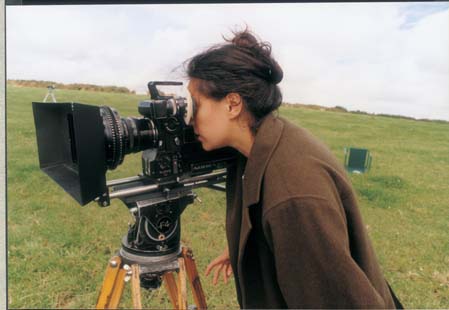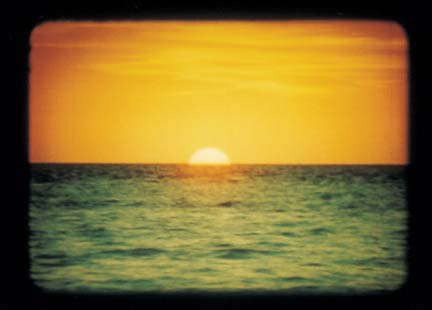
Tacita Dean

Teignmouth Electron Cayman Brac

The Green Ray
Tacita Dean has been described on the Frith Street Gallery website as being "best known for her compelling 16mm films, in which the specific qualities associated with film-making are of central importance", and that "Her work occupies a place between fact and fiction."
On the Tate Museum website I learn that "Dean's work seeks connections between past and present, fact and fiction." While this gallery agrees that her work is mostly in 16mm film I also learn that "Throughout her career, Dean has placed great importance on the written and spoken word."
Wikipedia tells me that "The sea forms a theme through Dean's work"
Adrian Searle writing for the Guardian says "Tacita Dean's work is an art of circumnavigations, of passes and returns."
Jeanette Winterson, also writing for the Guardian informs me that "The sea, time, timelessness, found objects, the unnoticed life of the everyday, the unregarded, the discarded, are all themes of Dean’s work"
A notice in Zoom magazine (Sept-Oct 2006) of an upcoming exhibition in Basel tells me that "Her works are significant for the importance they give light in creating meaning."
You see my problem with getting a handle on Tacita Dean for this review of a monograph from Phaidon. Dean is not an artist that lends herself to easy explanation, she works in several different media, on apparently different subject matter. She was trained in painting, works in film, in photography, drawing, collage, sculpture, sound, and what used to be called performance art (as she went in search of the seemingly missing Spiral Jetty).
One thing is certain, she's one of the most important new artists to come out of England in recent years that you may never have heard of. There is no massive publicity machine working here, but there is no shortage of critical attention to her work. I suspect it is this very lack of specialization that has prevented her from being better known. Even in our artists we like a small, neatly packaged "sound-bite".
And so we come to this, the first monograph devoted to her work. With an artist this diverse, and this critically scrutinized, one would expect a coherent explanation of what she's all about. Are we going to know who Tacita Dean is by the end of this book?
The fact that it's written by three different people is not a good sign. The book contains no introduction, and seems to begin in the middle of a conversational interview by Marina Warner.
The second section of the book is an analysis of her work by Jean-Christophe Royoux who suggests that Dean's work involves ephemera, the present time, catching air, the sun's green ray as it sets, chalk on a blackboard, sounds. I'd have to agree with this, her work Friday/Saturday for example, presents the simultaneous playing of sounds from around the world at the same time, all at the same place. It doesn't get more ephemeral than that.
Germaine Greer then presents her interpretation of the work "Boots", and the book finishes up with selections by Dean (W.B. Yeats and W.G. Sebald), a collection of the artist's writings on her own work, and a chronology.
In the end, what I know for sure is that Tacita Dean was born in 1965 in Canterbury, England. She was educated at Kent College, Canterbury. Her brother is Ptolomy Dean, the architect and her grandfather was Basil Dean, founder of Ealing Studios. I know she lives in Berlin and that she's suffering from arthritis.
I know what art work she's done, but not it's significance. What meaning does Dean have to "art". What is her contribution? It finally occurs to me that Tacita Dean is in the middle, or perhaps even the beginning, of a very long and varied career, and it is unfair to expect a book to summarize what isn't ready to be summarized. The book is like Dean herself, scattered, varied, with some sort of underlying theme that it's going to take some digging to find. It doesn't so much explain as collect her.
In this, the book seems to have been created largely by Dean herself, despite the three authors. That I can't seem to get hold of Dean is no large tragedy, her body of work almost defies categorization and not being able to peg it means not being able to dismiss it. The book reflects the artist and that's as much as you can ask of a publication about someone still breathing.